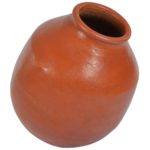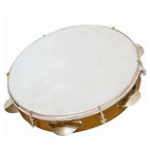
This is a post on the structure of a Carnatic music Kutcheri (a traditional musical performance gathering) accompanied by a virtual kutcheri that I have put together.
The kutcheri format as we know it today is said to have started out in the 1920s. That is not to say that it didn’t exist before that.
Traditionally, a kutcheri starts with a varnam. A varnam is a composition which basically tells you the swaras (notes: Sa, Ri, Ga, Ma, Pa, Da, Ni–> Shadjam, Rishabham, Gandharam, Madhyamam, Panchamam, Dhaivatham, Nishadam) that are present in that particular ragam both in the arohana (ascending scale) as well as avarohana (descending scale). It lays down the rules of how the various swaras can be combined in both the scales. It is split into specific parts and is a rather technical piece which lays out the rules for the development of a particular ragam. Thus the varnam is a composition which a student of carnatic music learns as a primer before going on to explore more elaborate nuances of ragas through kritis.
At this point let’s do a little more study of classical music. Carnatic music is made up of 72 fundamental ragas called the melakarta ragas or the janaka (giving birth) ragas or the parent ragas. All other ragas, and there are literally hundreds of them are derived (janya or given birth to) from these 72 janaka ragas. It just means that there are 7 swaras with 12 semi-tones in one octave. They are both in the ascending and descending scales combined in different ways to form these primary 72 ragas, i.e, these 72 ragas have the entre scale (Sa-Ni with their semi-tones) both in the ascending and descending scales. Hence they are called sampurna (complete) ragas. Janya ragas however are derived from these 72, meaning that they have have swaras left out from the parent. The number of swaras left out from the parent janaka raga can vary.
The list of the swaras and their semi-tones are like this: S, R1, R2=G1, R3=G2, G3, M1, M2, P, D1, D2=N1, D3=N2 and N3. Of these S and P do not have semi-tones.
In conjunction with swara is tala, which refers to the number and type of beats within a cycle. This is similar to the concept of meter and helps track the pace and time in a composition. There are 7 basic talams (Adi, Dhruva, Rupaka, etc), and 108 total talas, due to combinations with other factors known as angas and jathis.
I admit I have a fondness for the 28th Melakarta Raga called Harikambhoji. Many of the songs from the janyas of this raga are a favorite with me.
So, here’s my choice of varnam to start this personal kutcheri. I would love my kutcheri to start with this beautiful varnam called “Mathe Malayadhwaja”. Its not a traditional varnam nor an easy one, but its beautiful and captivating for me. So, here’s Sudha Raghunathan singing “Mathe”, in raga Khamas, janya raga of the 28th melakarta raga Harikhamboji set to Adi talam.
Raga: Khamas
Arohanam: S M1 G3 M1 P D2 N2 S Avarohanam: S N2 D2 P M1 G3 R2 S
http://youtu.be/4Rx6AO1KLVk
Following this, the kutcheri format prescribes one or two compositions of the trinity in Ghana ragams. We will have only one.
Who are the trinity?
The trinity is a group of three composers who are known as the creators of almost all the compositions that are sung today. They are Muthuswami Dikshitar, Syama Sastri, and Andhra’s own Thyagaraja.
What are Ghana ragams?
First, there are eight Ghana ragams in Carnatic music. They are Nattai, Goula, Bouli, Reetigowla, Malavasri, Arabhi, Varali and Sri. They are so called because they are said to be able to effectively portray masculine emotions like shouryam (ferocity), veeryam (bravery), roudram (anger) and so on.
So with this information, here is my second offering in the kutcheri. This is in Raga Nattai, janya raga of the 36th melakarta ragam Chalanattai and sung once again by the supremely talented Sudha Raghunathan. The song is “Swaminatha paripalaya” set to Adi Talam. The composition is by Muthuswami Dikshitar
Raga: Nattai
Arohanam: S R3 G3 M1 P D3 N3 S Avarohanam: S N3 P M1 G3 M1 R3 S
After this now we must have a composition in the shuddha madhyamam scale. Let us see what this is. This essentially means that the melakartas are divided into two types, the ragas which have shuddha madhyamam i.e, the first semi-tone of the swara M, M1 and those which have prati madhyamam or M2. So, now we have to select a raga that has shuddha madhyamam from one of the melakarta ragas. Let me choose my favorite melakarta raga Harikhamboji itself. It is after all my favorite one.
Here is the next offering from Maharajapuram Santhanam in Harikhamboji. The song is called “Rama nannu brovara”, a Thyagaraja gem set to rupaka talam.
Raga: Harikhamboji
Arohanam: S R2 G3 M1 P D2 N2 S Avarohanam: S N2 D2 P M1 G3 R2 S
Moving on to a composition in the prati madhyamam scale, let us see what this means. As I stated earlier, the melakarta ragas are divided into two: the shuddha and the pratimadhyamam scales. In fact, the first 36 ragas in the melakarta are in the shuddha madhyamam scale and the second 36 in the prati madhyamam scale. The most common one is Kalyani, also called the Mechakalyani. This is the composition “Nidhichaala Sukhama” by Thyagaraja rendered by the peerless and timeless M.S. Subbalakshmi in adi talam. Do enjoy.
Raga: Kalyani
Arohanam: S R2 G3 M2 P D2 N3 S Avarohanam: S N3 D2 P M2 G3 R2 S
I cannot go on to the main composition without having my favorite raga in my kutcheri, can I? So, I will have a Dwijavanthi in my repertoire. This raga is a janya raga of the 28th melakarta raga Harikhamboji. The composition is “Akhilandeshwari” by Muthuswamy Dikshitar sung by the Trichur brothers. The composition is in adi talam.
Raga: Dwijavanthi
Arohanam: S R2 G3 M1 P D2 S Avarohanam: S N2 D2 P M1 G3 M1 R2 G2 R2 S
Now we come to the main piece of the concert where the kutcheri format says that the composition should be a rakti/naya raga.
A rakti or naya raga is called a feminine ragam. In fact, the entire set of ragams are classified as ghana ragams, rakti/naya ragams and desiya ragams.As we discussed earlier, ghana ragams are said to be masculine ragams. Desiya ragams are those that have been imported into the Carnatic school of music from either Folk music or the Hindustani school. Hence the rakti/naya ragams are those which are said to be feminine. This means that the large majority of ragams are feminine ragams which are said to be capable of portraying feminine emotions like karunam (compassion), sringaram (romance), vatsalyam (parental love) and so on. This is not to say that ghana ragams cannot portray feminine emotions or vice versa. For more on this, please refer to this excellent lecdem by Sri. R Visweshwaran.
This main piece is the one where the vocalist, the violinist and the percussionists all get to display their talents and can sometimes go for an hour. It is called the ragam-tanam-pallavi where the raga is first explored in all its nuances through the alapana (where the swaras comprising the raga are sung in a melodic form to set the mood of the raga). This is then followed by the tanam or the main part of the composition.
Tanam was first developed for the veena but began to be practiced by vocalists too, and it means expanding the raga rhythmically with the use of syllables like ta, nam, tom, aa and so on. In the tanam phase an extremely versatile and accomplished singer can also incorporate a few other ragas than the one s/he originally started out with. Then, in the pallavi section, the singer sings a single line and then explores it in different speeds. Finally, the percussionists are given the time to explore the rhythms in their turn and the whole can take about an hour or more. For more on this very complicated form of singing, please refer here.
Now, I present for your listening pleasure, a superbly crafted Ragam-tanam-pallavi by Sanjay Subramaniam. This comes with a warning however: The piece takes over an hour to listen to but I assure you its well worth the trouble 😉 . The composition is “Sabapathiku veru deivam” in raga Abhogi and rupaka talam. Raga Abhogi is a janya raga of the 22nd melakarta raga Kharharapriya. Gopalakrishna Bharati has composed this song.
Raga: Abhogi
Arohanam: S R2 G2 M1 D2 S Avarohanam: S D2 M1 G2 R2 S
Before we end the kutcheri, after such an intense encounter with ragam-tanam-pallavi (RTP), we have to unwind and lighten the knots that we had got into. Its now time for some lighter yet melodious and easier pieces called tukkadas. Let us listen to two of them.
Sit back and enjoy a soothing, gentle and lilting “Hey Govind, hey Gopala” in raga Desakshi and rupaka talam. Suddha Desi is a janya raga of by now you know which melakarta!…yes, it is a janya raga of the 28th melakarta raga Harikhamboji. This divine song is rendered by the sister duo Ranjani-Gayatri and is composed by Surdas.
Raga: Suddha Desi
Arohanam: S R2 M1 P N2 S Avarohanam: S N2 D1 P M1 G2 R2 S
Second to last in the kutcheri is another gem from the evergreen and ever remembered M.S Subbalakshmi. This time it is a ragamalika, meaning that the song is composed of multiple ragas. This one “Kurai ondrum illai”, is composed in three ragas Shivaranjani, Kapi and Sindhu Bhairavi. Shivaranjani and Kapi are janya ragas of the 22nd melakarta raga Kharaharapriya and Sindhubhairavi is a janya raga of the 10th melakarta raga Natakapriya. The composer of this song is the famous Indian politician and freedom fighter C.Rajagopalachari.
Ragamalika: Shivaranjani, Kapi and Sindhubhairavi
Raga: Shivaranjani
Arohanam: S R2 M1 P N3 S Avarohanam: S N2 D2 P M1 G3 R2 S
Raga: Kapi
Arohanam: S R2 M1 P N3 S Avarohanam: S N2 D2 N2 P M1 G2 R2 S
Raga: Sindhubhairavi
Arohanam: S R2 G2 M1 G2 P D1 N2 S Avarohanam: N2 D1 P M1 G2 R1 S N2 S
http://youtu.be/N4eN1nrohkE?list=PLP8cJHEXLrbQBTIIGVJ3WRxyEgb86sJ5U
Finally, we round off this kutcheri with the standard sign off raga which is Sowrashtram. The signature song is “Pavamana suthudu battu” and here it is rendered by K. J Yesudas. Sowrashtram is a janya raga of the 17th melakarta raga Sooryakantam. It is a composition by Thyagaraja set in adi talam.
Raga: Sowrashtram
Arohanam: S R1 G3 M1 P M1 D2 N3 S Avarohanam: S N3 D2 N2 D2 P M1 G3 R1 S
I hope you enjoyed the kutcheri as much as I did putting it together for you!!
References:
- http://www.ragasurabhi.com/carnatic-music/raga-comparisons.html
- http://www.shabda.co.in/?q=node/65
- Concert Format Sequence – Carnatic Music
- http://www.chennaionline.com/musicnew/CarnaticMusic/174th.asp
- http://en.wikipedia.org/wiki/Melakarta
- http://en.wikipedia.org/wiki/Janya
- http://en.wikipedia.org/wiki/Trinity_of_Carnatic_music
- http://en.wikipedia.org/wiki/Harikambhoji






Wov! Another great piece, Nilambari. Very informative. I love the first two compositions–very easy to listen and enjoy. 🙂
Thank you. The compositions have been chosen after a lot of listening and sifting. But yes, there is my listener bias towards you know which ragas. 😉 Glad you liked it. 🙂